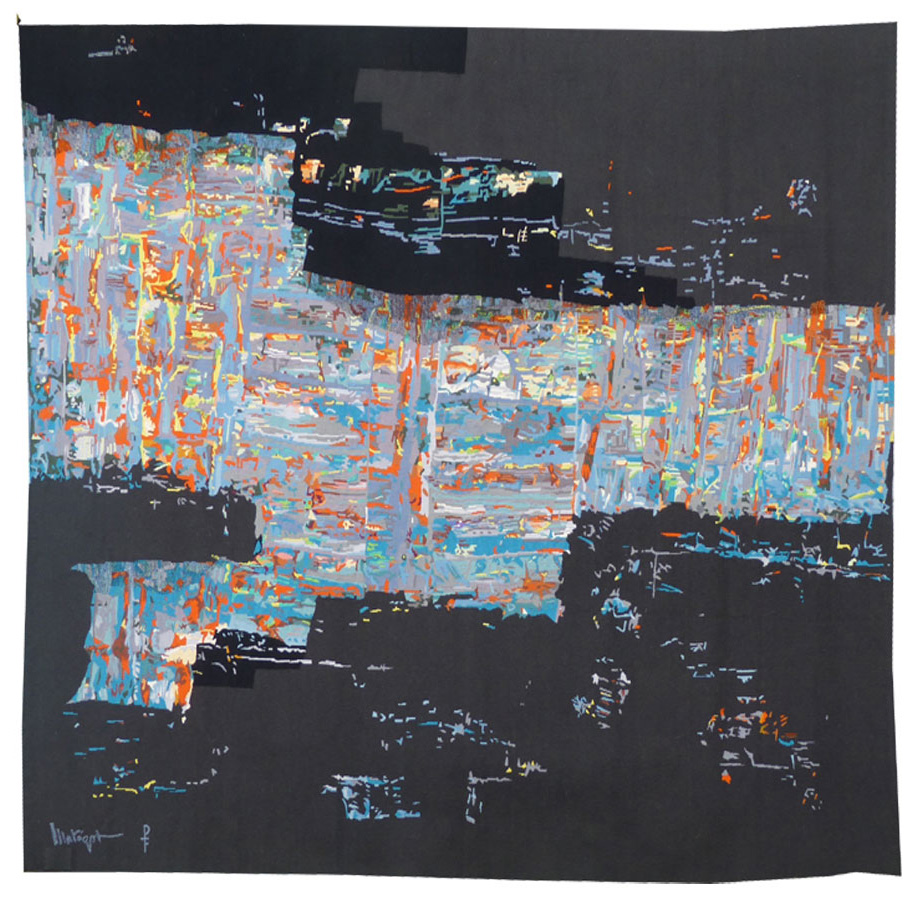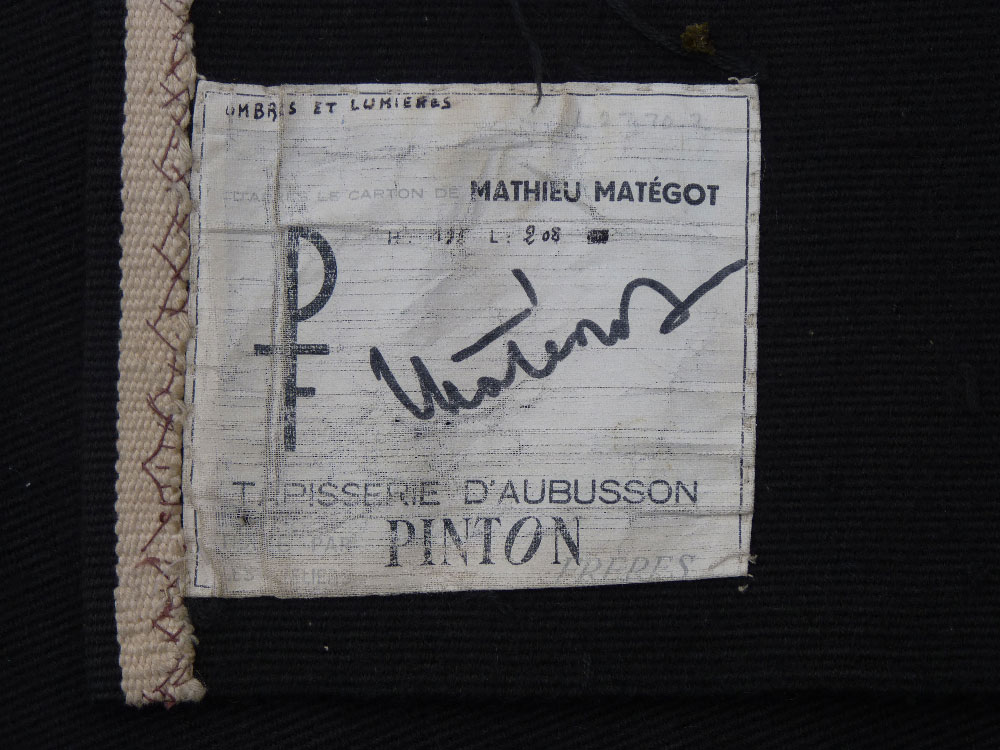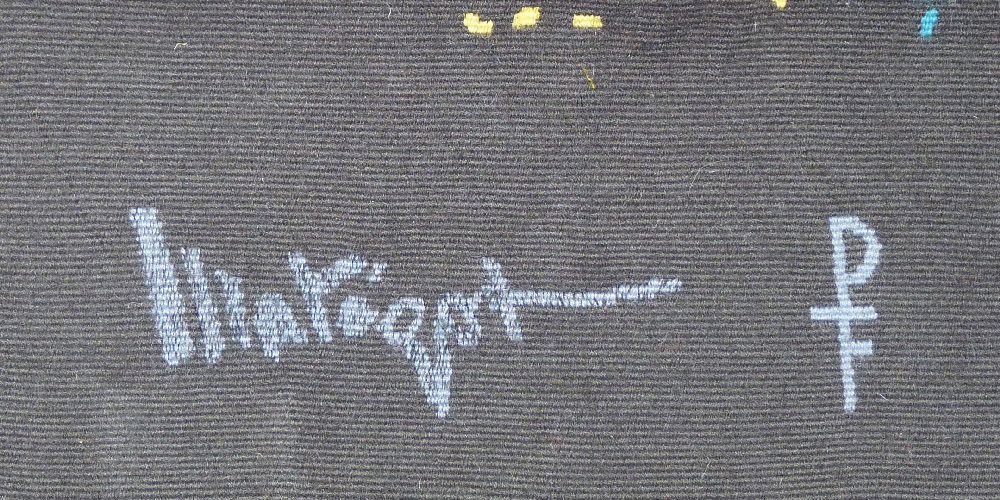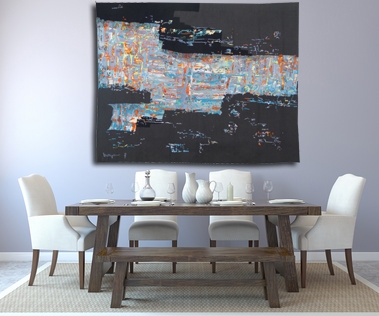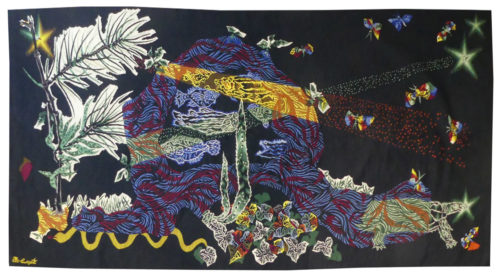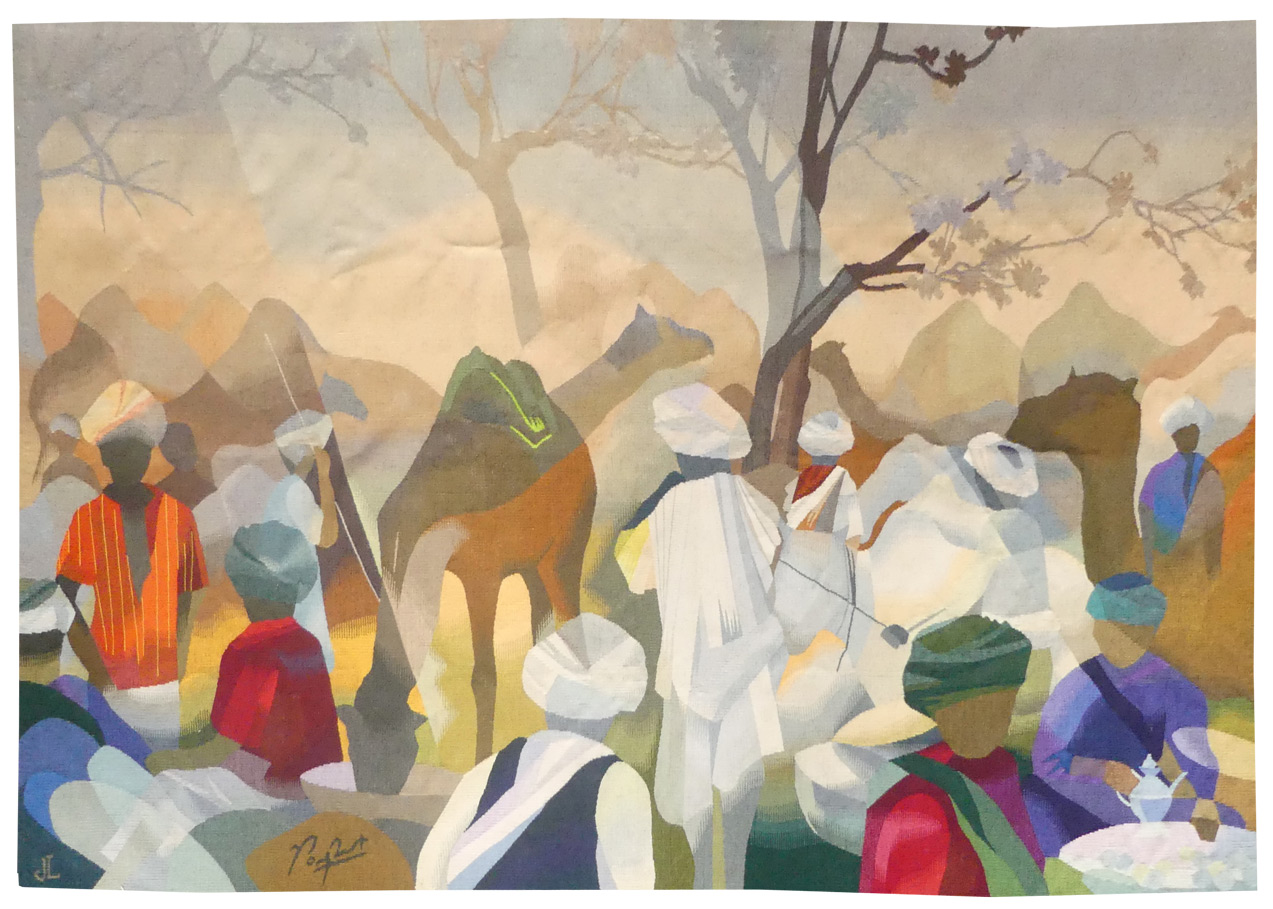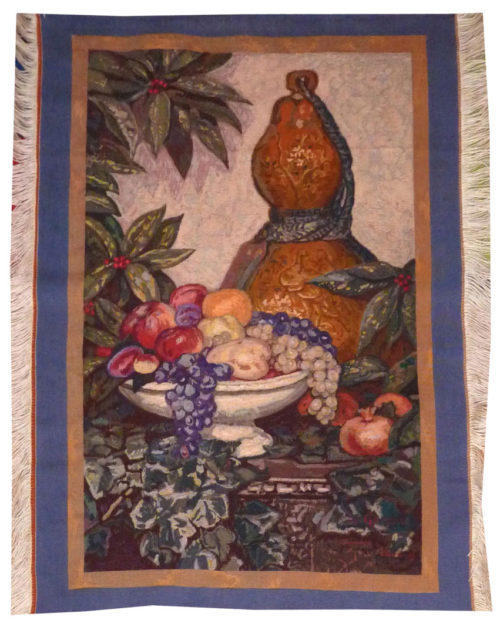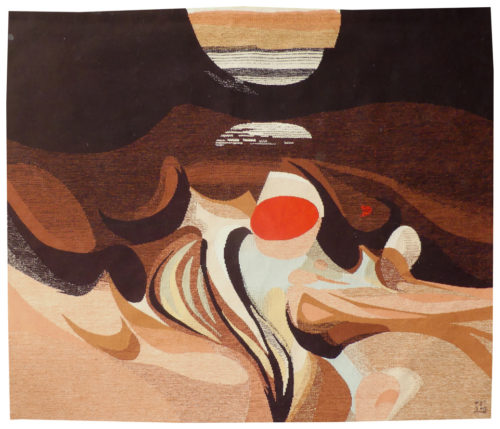Ombres et lumières (light and shadow)
Aubusson tapestry woven in the Pinton workshop.
Complete with certificate of origin signed by the artist.
Circa 1965.
Matégot, originally a decorator, then creator of artefacts and furniture (an activity he abandoned in 1959) met François Tabard in 1945 and gave him his first cartoons, first of all figurative then rapidly of abstract design in the 1950’s. He became a member of the A.P.C.T. (Association des Peintres Cartonniers de Tapisserie) in 1949, participated in many international exhibitions (Matégot, like Lurçat before him, was an untiring advocate of the art of tapestry) fulfilled numerous public commissions, sometimes of monumental proportions (“Rouen” 85m2 for the Préfecture of the Seine Maritime département, and also tapestries for Orly Airport, for the Maison de la Radio, for the IMF…) and designed no fewer than 629 cartoons up until the 1970’s. In 1990 the Matégot foundation for contemporary tapestry was inaugurated in Bethesda, U.S.A. Matégot is an artist, like Wogensky, Tourlière or Prassinos, who turns wool textiles resolutely towards the abstract: at first lyrical, geometric in the 70’s, exploiting various technical aspects of the loom : colour graduations, shading, irregularities…
This tapestry reveals Matégot’s preoccupation with the interplay of light and shadow which is often revealed in the titles of his works (cf. “Lumière d’été”, auctioned Millon-Robert 7.11.90, n° 31, reproduced on the cover of the catalogue, “Piège de lumière” preserved at the Musée Jean Lurçat et de la Tapisserie Contemporaine and reproduced p 47 of the exhibition catalogue). Here the cartoon uses an abrupt contrast, like a ray of light, between two opaque (with faults however) and black (but shaded) blocks. In fact all of Matégot’s works reveal the interplay of transparency and superposition, as if light (albeit fatal to the colours he uses) was trying to force its way through the wool.
Origin : contents of the Pinton workshop
Bibliography :
Exhibition catalogue, Matégot, Angers, Musée Jean Lurçat et de la Tapisserie Contemporaine, 1990-1991


